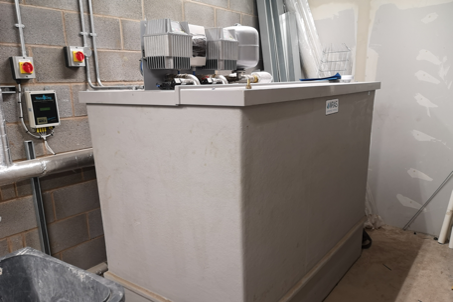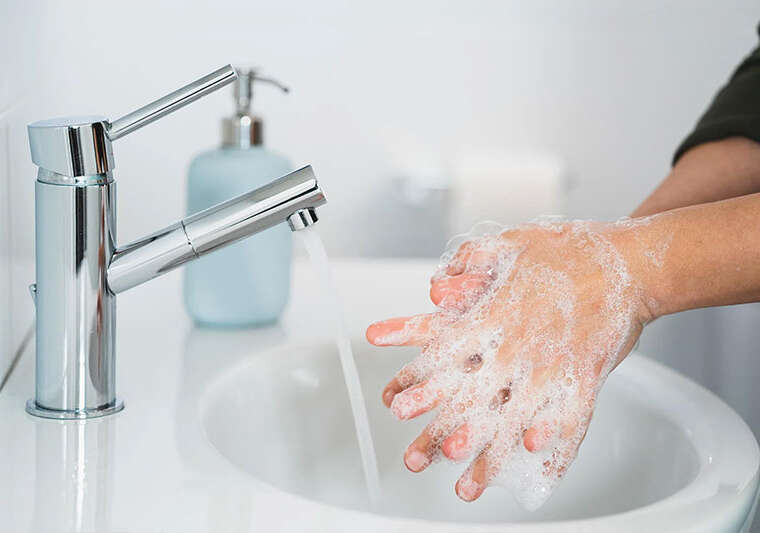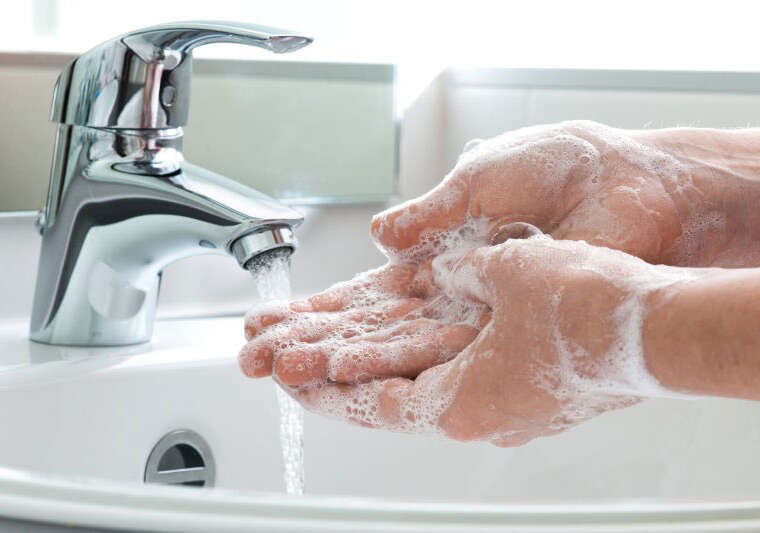Last week, we completed a legionella risk assessment and UKAS accredited water sampling/testing at a large international hotel chain in the centre of Birmingham.
Potable (drinking) cold water was supplied by the mains to all kitchen and public WC facilities and there was also 1 x large cold water storage tank with booster pumps providing potable cold water (drinking water) to all rooms, including mixer showers. As part of the potable cold water supply is tank-fed, the tank and its sentinel outlets are sampled for TVC, E.Coli and Coliforms on a six-monthly basis, during a physical inspection of the tank and pipework.
All calorifiers’ feed pipework was supplying hot water at almost identical 60oC, and their pumped return pipework was 57oC – these temperatures are important as (a) any lower and they would present a risk of legionella growth due to poor temperatures – legionella can grow rapidly in water systems where the hot/cold water is between 20-50oC; and (b) any higher and they would represent a scalding risk to all building users.
Site have a full legionella monitoring regime in place since their previous legionella risk assessment, which we conducted two years ago. They monitor the temperatures of the water monthly, including all sentinel outlets and calorifiers. Quarterly, they clean and descale all mixer showers (including the pot washer in the kitchen) to remove scale and other contaminants which can provide nutrients for legionella bacteria to grow. Six-monthly they inspect and sample the cold water storage tank and sentinel outlets, blow-down their calorifiers from the base and annually they drain all expansion vessels, service and clean all TMVs (Thermostatic Mixing Valves) and audit all logbook entries for the previous 12 months. Weekly, site maintain a robust flushing regime of little used outlets, which varies week on week according to occupancy levels of the hotel – this is paramount to ensure stagnation does not occur in any part of the hot and cold water systems – stagnant water provides ideal conditions for legionella growth and should be avoided by maintaining such a flushing regime.
Legionella risk assessments should be reviewed regularly – at least 2-yearly, or sooner if there is a change in key personnel on site, or where concerns arise about the current regime or water quality. The report we carried out provided clear photographic evidence, in accordance with the regulations, as well as a clear confirmation of the regime in place and confirmation of their maintenance of a robust control regime. The survey and all recommendations were made in accordance with ACoP L8, HSG 274 and BS 8580.




